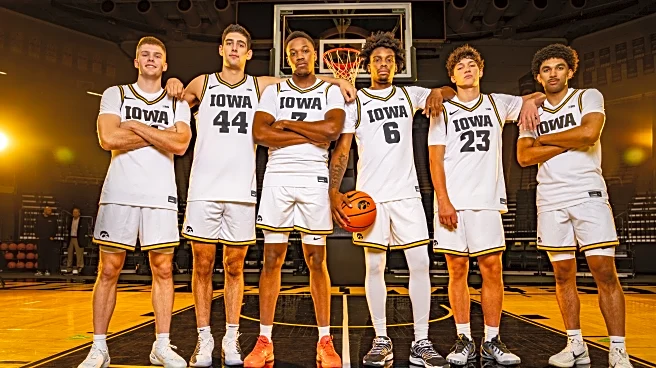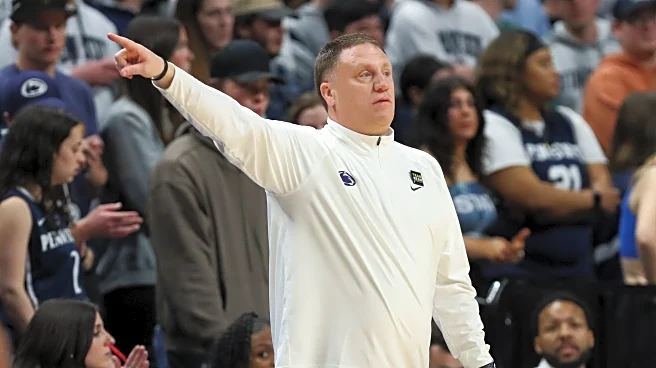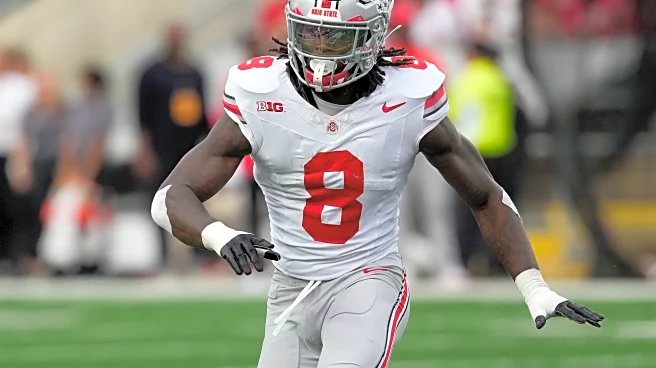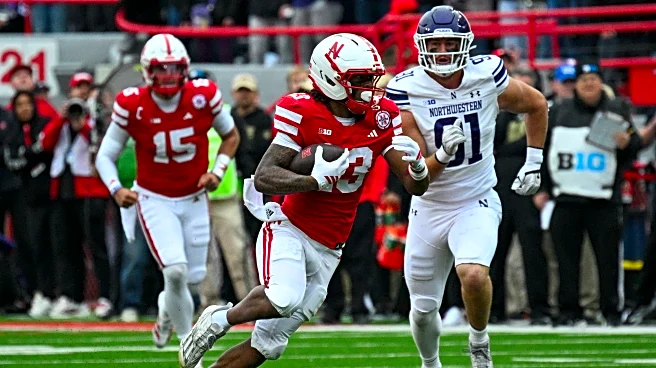We’re closing out our player preview of the Washington men’s basketball roster today by looking at the primary centers on the Husky roster. There’s some wiggle room here with players who could also see
minutes at the power forward spot (and Hannes Steinbach who was in yesterday’s edition will also play some minutes at center) but these are likely to be the primary bigs. If you missed any of the other preview this week you can check them out here: Part 1 (primary ball handlers), Part 2 (other guards/wings), Part 3 (forwards).
*****
C 6’11 Franck Kepnang (5th year)
2024-25 Stats (per game): 6.9 pts, 5.1 reb, 0.2 ast, 1.9 blk, 53.3% 2pt, 80.0% FT
Background
Kepnang was a borderline 5-star recruit coming out of high school in the class of 2021. Oregon however was looking for more depth at center and got Kepnang to commit and reclassify in order to join the team for the start of winter quarter. He did what you’d expect for a very young, athletic center: dunked the ball, blocked shots, and committed fouls. Kepnang’s block rate as a freshman would’ve led the conference had he played enough minutes to qualify but he averaged 6.1 fouls per 40 minutes.
In his sophomore year Kepnang started a few games while N’Faly Dante was injured and got up to 15 minutes per game of playing time. He started to branch out a little more on offense which saw his field goal percentage drop but averaged almost 5 points and over 1 block per game. The rotation at Oregon though got very crowded with Dante, Bittle, and 5-star Kel’el Ware coming in so Kepnang transferred to Washington.
Franck ultimately lost a starting spot battle to Braxton Meah once at Washington but still was averaging more minutes per game than Meah early on as a junior. He was on his way to career highs in every statistical category. Then he fell awkwardly in a narrow loss at Oregon State and suffered a torn ACL.
Kepnang eased back into things coming off the injury and averaged just over 10 mpg through the first 3 contests. Then, Hopkins gave him back the starting job and after a few more games of warming up, he suddenly looked like UW’s best player. Kepnang won back-to-back Game MVPs from KenPom averaging 15 points, 9 rebounds, and 4 blocks per game in wins over Montana State and Gonzaga. In the next game however, Kepnang re-injured his knee and ended up missing the entire season.
Things looked promising when Franck was back in time for the season opener last year but then suffered another injury in the team’s second game and didn’t return for 2.5 months. He slowly rounded back into form with a standout performance at Penn State that secured the win (14 points, 5 blocks). Over Washington’s final 7 games he averaged 9.0 points, 6.1 rebounds, and 2.2 blocks per game.
Playing Style
Franck the Tank came by that nickname honestly as he has a clear NBA body. At 6’11 and 250 pounds he looks chiseled and has showed off premium athleticism. It was somewhat perplexing then that Kepnang really struggled to rebound the ball during his time at Oregon. His defensive rebounding rate of 8.5% and 15.2% were more fitting of a 6’6 wing than a muscular nearly 7-footer. That got better while playing at Washington going from 18% to 21.9% to 20.2% last season. Kepnang has seen similar growth with his offensive rebounding going from 8.6% to 8.6% to 12.4% to 13.0% to 11.3% over his career.
One thing that hasn’t really changed over Kepnang’s career is that he’s a tremendous shot blocker. Franck’s block rate has been at least 8.4% during every season of his career. Last year his block rate would’ve been good for 16th nationally among qualified players and 3rd among players in the Power 6. When Kepnang plays, he’s one of the best shot blockers in the country.
That does come at a cost. Kepnang has also never averaged fewer than 5.6 fouls per 40 minutes. Even if he were fully healthy that means Kepnang would average fouling out of a game in just 35 minutes played. Combine that with the injuries and it’s just not possible to rely on him to always be on the court. There are also definitely times when Kepnang chases a block that allows for an easy putback when he misses because he jumps out of position.
When he’s out there though, he is a true impact player. Kepnang’s much more effective on the defensive side of the court but he still does provide offensive value. You won’t see Kepnang taking a bunch of (or any) three-pointers but he is capable of stepping out to the baseline and hitting a 12-15 foot jumper if necessary. Considering his level of physicality on defense, it’s a little surprising that Kepnang often chooses to go for hook shots instead of dunking it with authority. Not that he never does that but it doesn’t happen quite as often as you might think.
You’re also not going to see much in the way of passing from Franck. If he gets the ball in the post then he’s going to try to score it (he stunningly had 0 assists last year). The good news is he has never had more than 2 turnovers in a game at Washington and shoots nearly 60% from the field so getting the ball to him near the hoop usually results in good things happening even if the ball is never getting passed back out.
Expectations for 2025-26
Injuries continue to be the big issue for Franck. He has never played more than 37% of a team’s minutes in a season and he has never played even 15 games for Washington through 3 seasons. It shouldn’t come as a surprise to anyone if he goes down yet again. The optimistic look though is that this is the first time in three years that Kepnang has been fully healthy through an entire offseason rather than rehabbing an injury from the previous year. He should be entering this season in the best shape and the best health that he has in a long time.
Even with the injury to Traore, this appears to be the deepest Husky frontcourt in several years. That will hopefully allow Kepnang the chance to cut back on his minutes load and keep him fresh even if he is by far the best rim protector on the roster. The Steinbach/Kepnang duo isn’t the best offensive fit since Kepnang absolutely can’t play on the perimeter and Steinbach wants to be near the hoop for his prodigious rebounding. However, I still expect them to start games together and overlap for ~10 minutes per game while otherwise staggering their minutes when possible. That means Kepnang will put up some impressive rate stats but may see a decline in his per game totals due to reduced usage.
2025-26 Projected Per Game Stats: 20.0 mins, 5.3 pts, 4.9 reb, 0.2 ast, 0.9 to, 0.4 stl, 1.8 blk, 55.0% 2pt, 68.9% FT
*****
PF/C 6’10 Lathan Sommerville (2nd year), Transfer from Rutgers
2024-25 Stats (per game): 8.2 pts, 4.1 reb, 0.6 ast, 0.6 blk, 52.7% 2pt, 11.1% 3pt, 86.3% FT
Background
The 6’10, 275 lb Sommerville was part of Rutgers’ best ever recruiting class last year headlined by eventual top-five draft picks Dylan Harper and Ace Bailey. It was clear at the time that Sommerville was the distant 3rd banana of that group coming out of Peoria, Illinois but he was a four-star recruit and the #132 player in the country in the 247 Sports Composite rankings. Sommerville picked Rutgers over offers from Georgia Tech and Wake Forest among others.
The path to playing time was made easier by a number of transfers out before Sommerville’s arrival and he quickly asserted himself as the #2 center in the rotation before moving into a starting role midseason. He wound up finishing 3rd on the team in both points and rebounds per game behind the duo of Harper and Bailey each time. The season though did not go as anyone thought it would with that much NBA talent on the roster (even if it was very young) and Sommerville opted to transfer to Washington after the Scarlet Knights went 15-17.
Playing Style
Even before you get to his playing style, Sommerville’s body type makes him unique. You don’t see as many players these days who have plenty of mass to create space down low and may not have the corresponding height or vertical leap to be a traditional center. If you know what I mean. My favorite recent comp to Sommerville is former Colorado standout Evan Battey and it’s no surprise his freshman year is the #2 player comp via KenPom’s algorithm as well.
The lack of height/leaping ability does hurt Sommerville’s success on the boards. His offensive and defensive rebounding rates would both be solid for a 6’7 small forward but underwhelm for a starting center in the Big Ten. He can carve out space by boxing out to grab boards but Sommerville isn’t going to jump over people to get a rebound. Similarly, his block rate of 2.9% is definitely below average for a B1G center. There are ways for Sommerville to be effective on the defensive end but he certainly lacks a level of athleticism that translates more traditionally to quality defense.
What is so surprising about Sommerville is the amount of skill he possesses on the offensive end. Sommerville shot an outstanding 86% from the free throw line on close to 100 attempts. Having a big man who is nearly automatic at the line late in games is a tremendous advantage. The problem is that it didn’t really translate to shooting during in-game situations. Sommerville shot below 40% on mid/long-range jumpers inside the arc and was just 1/9 from beyond the three-point line.
The shot breakdown was even more mystifying given that Sommerville shot 70% in the paint but took about 60% of his two-point shots on jumpers. If Sommerville were able to shift 25% of his long 2’s and move them into the paint and another 25% and take them from beyond the three-point line then he would be a potentially dominant offensive player.
Instead, the idea that Sommerville might be able to stretch the floor is theoretical. There were only 6 high major players last season at 6’8 or taller to shoot 80%+ from the free throw line with at least 75 makes. The others all attempted at least 107 three-point shots and made at least 33.6% (Oregon’s Nate Bittle on both accounts). Sommerville shot just 1 of 9 (11%). That’s just perplexing.
Expectations for 2025-26
Taking a chance on a center who averaged 8/4 on 85%+ FT shooting as a true freshman in the Big Ten seems totally worth it on its face. But I’ll admit to having reservations. I want my starting center to be able to at least be very good at one of either getting rebounds, blocking shots, or stretching the floor. Sommerville last year was deficient on all 3 counts even if he was really good at post scoring and making free throws. It’s entirely possible that those are biases on my part and Coach Sprinkle doesn’t value what I do. Sommerville was the first transfer added after all.
The injury to Ognacevic though opens up the chances that Sommerville is able to carve out a steady role in the rotation. If he can actually stretch the floor and both take/make some more 3’s this season then we could see him playing alongside either Hannes Steinbach or Franck Kepnang for stretches who can cover up some of the rebounding/shot blocking issues. That’s only possible if the opponent is also playing a true 2-big lineup because asking Sommerville to chase someone around the perimeter on defense sounds like a disaster but it gives Sprinkle more options at a bare minimum.
2025-26 Projected Per Game Stats: 18.8 mins, 7.0 pts, 3.6 reb, 0.6 ast, 1.1 to, 0.3 stl, 0.5 blk, 49.5% 2pt, 27.3% 3pt, 80.3% FT
*****
PF/C 6’11 Christian Nitu (2nd year), Transfer from Florida State
2024-25 Stats (per game): 1.9 pts, 1.3 reb, 0.2 ast, 0.2 blk, 48.6% 2pt, 0.0% 3pt, 50.0% FT
Background
Florida State under Leonard Hamilton was known for prioritizing intriguing size above all else and that’s the case for Nitu. He was one of the top prep players in Canada and the #257 overall recruit in the class of 2024. He originally committed to Indiana State but re-opened his recruitment after coach Josh Schertz left to take the Saint Louis job. Last season, which was Hamilton’s last, ended up a bit of a disaster for Florida State and so Nitu entered the portal and transferred to Washington.
He spent most of the summer away from the team while playing for Team Romania at the U20 FIBA Eurobasket. Nitu mostly thrived for a not good Romania team and wound up leading the squad with 12.3 points per game, 7.7 rebounds per game, and 2.1 blocks per game on 52.9% 2pt, 24.1% 3pt, 68.8% FT shooting. It wasn’t exactly pretty on offense but Nitu showed flashes being asked to be a psuedo-point-center. Coach Sprinkle announced that Nitu had missed some time with a toe injury after joining the team at the beginning of fall quarter and he missed the exhibition against UNLV.
Playing Style
Nitu joined a Florida State roster that was very tall as always for Coach Hamilton (4th in team height) but lacking in overall shooting (340th in points coming from 3’s). There wasn’t exactly an expectation that Nitu would see a lot of the court right away and he ended up playing 22 games and only cracked double-digit minutes in three of them. The results were generally what you’d expect to see from a raw, lanky center playing on a not very good team. Per Evan Miyakawa, Florida State scored just 96.2 points per 100 possessions (adjusted) with Nitu on the court which was last on the team but only gave up 89.9 which was best on the team. The block and rebounding rates looked underwhelming but the defense played a lot better with Nitu out there.
The offense on the other hand struggled mightily. Nitu has the potential to hit outside shots but missed all 7 of his attempts from there last season. He made 7/29 shots from deep at EuroBasket so there’s a chance that he can stretch the floor a little bit but that’s still a mostly theoretical skill. During that tournament Nitu showed the potential to put the ball on the floor and pull up in the midrange but it’s much more accurate to consider him a defensive specialist at this point protecting the rim against skinnier centers.
Expectations for 2025-26
The path for playing time opened up a bit for Nitu when Mady Traore went down for the season before it even started (see the next entry). Nitu is suddenly the 2nd best shot blocker on this roster behind Franck Kepnang who isn’t known for his availability unfortunately. If Kepnang ends up missing time at any point this season then it could thrust Nitu into a bigger role. There’s also a reasonable chance that the offense is still just too limited in a conference as good as the Big Ten for Nitu to be able to survive on both ends of the court.
I originally had Nitu playing spot minutes as the 4th big in the rotation before the addition of Nikola Dzepina last week. There’s still a chance that we see Nitu play in 5-10 games particularly in blowouts but I’m going to just list him as not in the rotation since I don’t think he will be barring further injury.
2025-26 Projected Per Game Stats: Not in Rotation.
*****
C 6’11 Mady Traore, JUCO transfer (4th year)
It has been a winding road for Traore. A native of France, he started off his college career at New Mexico State and arrived just in time for a hazing scandal to cause that team to cancel the second half of their season. Traore entered the portal after that experience and wound up at Maryland where he started 4 games but only appeared in 12 total in a deep reserve role. Traore shot 10/19 inside the arc and 0/7 from deep while only taking 2 free throws between those two stops.
Traore entered the portal again when it was clear he wouldn’t see much playing time behind the Derik Queen and Julian Reese duo. He went the JUCO route this time, transferring to Frank Phillips College. It was a good decision as Traore had the chance to expand his skillset and wound up winning conference Defensive Player of the Year while averaging 13.2 points, 8.4 rebounds, and 2.7 blocks per game. That helped launch Traore to being named one of the top JUCO recruits in the country and he committed early to Washington.
There were still plenty of offensive struggles. Traore somehow shot in just the 1st percentile overall by making just 37.5% of layups at nearly 7-foot tall. The good news is that he dunked almost as much as he tried a layup and those were much more successful.
Expectations for 2025-26
There’s unfortunately not a lot of mystery here. Traore suffered a lower leg injury over the last month and has already been ruled out for the season. Playing time would’ve been tough to come by if everyone stayed healthy but that’s never a given with Franck Kepnang. Traore appeared to be the only other true rim protector on the roster and the most likely to see a huge boost in minutes if Kepnang gets hurt.
Instead, Traore will sit on the bench and hope to take over a potential starting role next season after Kepnang runs out of eligibility. There’s a chance that Traore has up to 3 years of eligibility remaining somehow although that’s always a moving target (NMSU players got a year back for hazing scandal, JUCO who knows, redshirt this year).
(A note that it sounds like Traore is being removed from the roster since he is out for the year to make room for Nikola Dzepina. Didn’t know they could do that but apparently they can per Coach Sprinkle recently.)
2025-26 Projected Per Game Stats: Out for Season with Injury
*****
We did it. 11,000+ words later. See you Monday for the opener against an underrated Arkansas Pine-Bluff.











